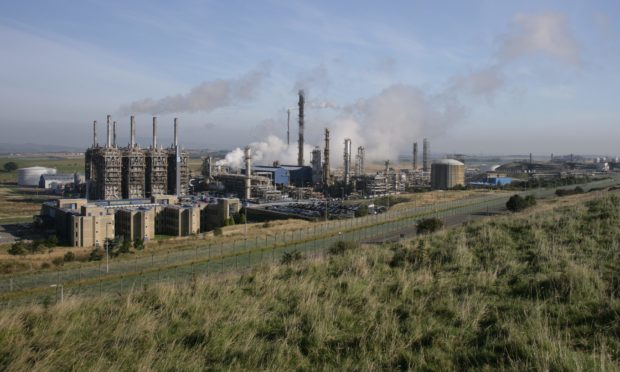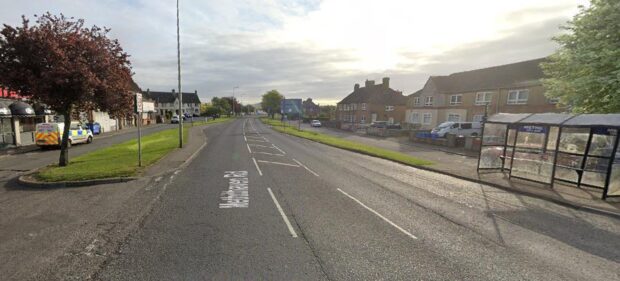Shell is in “commercially sensitive” talks to find a solution to continuous flaring at its Mossmorran plant.
The petrochemical giant, which operates Fife Natural Gas Liquids (NGL) Plant alongside Fife Ethylene Plant (FEP), run by ExxonMobil, said it is trying to stem a flow of ethane which needs to be burned off by ground flares at the site.
Since the failure of two of its three boilers in mid-August, the ExxonMobil plant has been shut down. However, the Shell plant is still running.
Shell’s Fife NGL Plant produces hydrocarbons for industry including ethane, which is piped to FEP to be processed.
With FEP likely to be out of action until the end of the year, the ethane is unable to be used.
The resulting flaring is causing a perpetual glow in the sky which can be seen for miles during the hours of darkness.
Fife NGL Plant manager Teresa Waddington said Shell was exploring options, including removing ethane from the mixture of gases piped to the plant.
She said any attempts to eliminate the need for flaring would also depend on the weather, with cold conditions increasing the demand for fuels.
She said: “Exxon is our main outlet for ethane so currently we are producing ethane to Exxon which is then being routed to our ground flares.
“Obviously that’s not where we want to stay.
“We’re looking at alternative outlets for ethane including reducing the feed of ethane coming into the plant.
“Fundamentally what we’re trying to do is get to a place where we can continue to meet the needs of the National Grid and other users of our system while not flaring at all.
“We’re looking at a multitude of different projects that we’re trying to bring up in order to divert ethane feed. Some of those are commercially sensitive so I can’t go too deeply into the details.
“I can’t say that you will see flaring for the duration of Exxon’s outage. Our hope is that we will get a couple of different options on the table before then.
“But quite frankly it depends a bit on temperature, if it stays cold in the UK and the need for natural gas continues.
“We are currently limiting the system to within the ground flare capacity, with a goal to reduce that as we find other sources for the ethane outlet.”
Ms Waddington has also warned there might be occasional bouts of elevated flaring, which could be smoky.
She was speaking to Fife Council’s Environment and Protective Services Committee, to update them on Shell’s operations at Mossmorran and Braefoot Bay.
Councillors heard that Shell’s plant at Mossmorran produces up to 30% of the UK’s natural gas supplies.
Gas from British and Norwegian gas fields in the North Sea is piped to the St Fergus terminal in Aberdeenshire, where methane is extracted for the National Grid.
A mixture of ethane, propane, butane and pentane is then piped from St Fergus to Fife NGL Plant, where the gases are separated. The pentane is piped to Braefoot Bay, where it is distributed to facilities across Europe.










